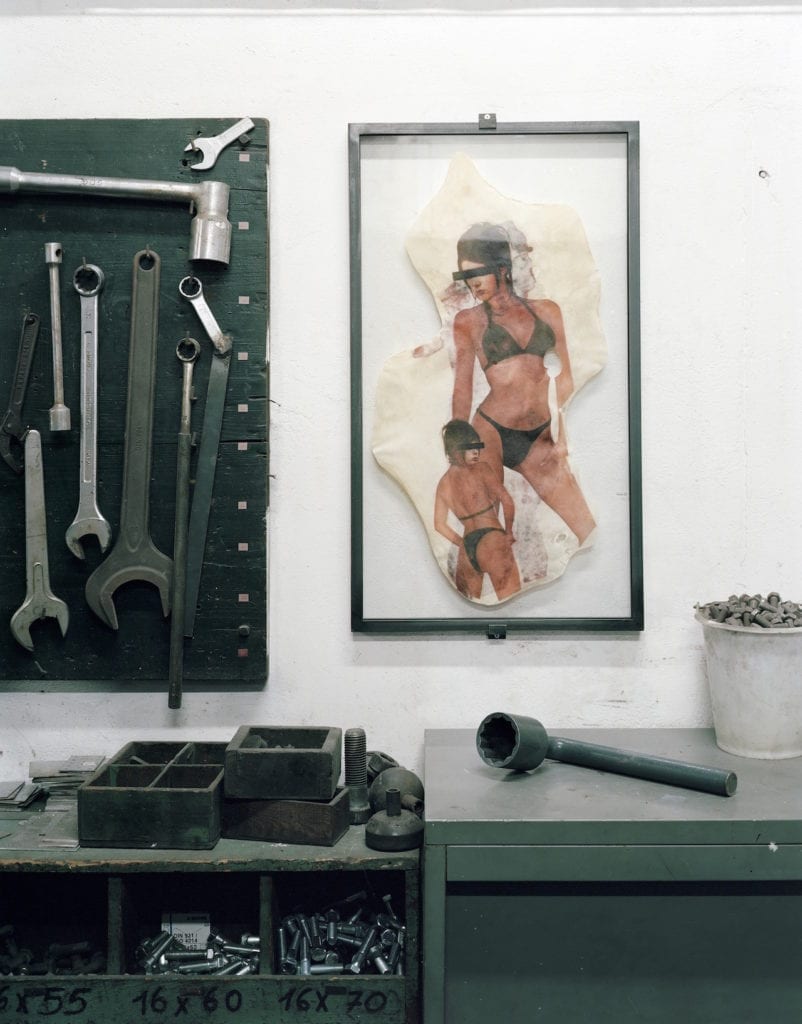There is a great sense of contradiction in Mailaender’s oeuvre as, on one hand, he recognises the instability of the photograph and, on the other, he attempts, through bizarre strategies, to make this unstable image have a permanence, albeit a deceptively unsophisticated one. I mention that the French philosopher Georges Bataille thought that all writers and artists feel a great sense of guilt about what they do, that they will be found out by their parents for not serving a useful function in society.
Mailaender laughs at this and replies: “I feel fairly sure of what I do but of course I have certain doubts about the work because it’s quite a load to carry around on your shoulders, this kind of work, in a way. My daughters are in school and I pray to God that the teachers don’t Google my name and see a photograph of a baby being sick while being kissed by its parents.”

“I had total carte blanche, and so I proposed to experiment, together with their chemist, with printing on leather, which is very difficult, especially as the skin is treated with chlorine to kill all life remaining in the skin. After experimenting with cyanotype, anthotype, and the Van Dyke processes, we eventually found a new technique with a dye.
“For the first two months, I collected documents such as newspaper clippings, photographs, adverts, postcards and negatives that were somehow related to skin to create a new archive. They will continue production with some of the techniques we invented.”
Back in 1917, when Marcel Duchamp put a urinal in a gallery, it was intended to make a serious point, not just be toilet humour. At one time the purpose of art was to elevate the human being to a level of perfection in light of the intimidating perfection of an almighty God. And so the notion of beauty is that which attempts to be fully formed, perfect and idealised.
Along with several others, Duchamp questioned the notion and function of art, and effectively started the ball rolling on the revelatory understanding that art is in crisis, from which has sprung some of the most significant modern art of the 20th century.
Mailaender is a part of the movement that is a consequence of this crisis that exists in the world of image overload, mass reproduction, cyber culture and the almost total reduction of the space between high and low culture. He responds honestly with his absurd art as a challenge to the idealistic, egotistical and high-minded ideas we have about ourselves
The Fun Archive is showing at NRW-Forum Dusseldorf until 30 April. nrw-forum.de Skin Memories is published by RVB Books. rvb-books.com This interview was first published in BJP’s April 2017 issue, which can be bought in thebjpshop.com
